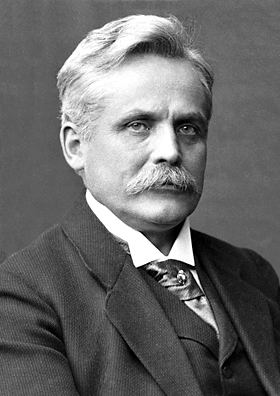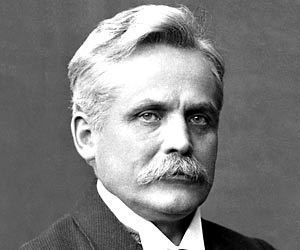Nationality German Role Physicist Fields Physics Spouse Luise Mehler (m. 1898) | Name Wilhelm Wien Children Karl Wien | |
 | ||
Born Wilhelm Carl Werner Otto Fritz Franz Wien13 January 1864Gaffken near Fischhausen,Province of Prussia ( 1864-01-13 ) Institutions University of GiessenUniversity of WurzburgUniversity of MunichRWTH AachenColumbia University Alma mater University of GottingenUniversity of Berlin Doctoral students Karl HartmannGabriel HoltsmarkEduard Ruchardt Similar People Max von Laue, Hermann von Helmholtz, Robert Dopel, Pierre Prevost, Robert Andrews Millikan | ||
Hans bethe physics journals at the time and wilhelm wien 7 158
Wilhelm Carl Werner Otto Fritz Franz Wien ( [ˈviːn]; 13 January 1864 – 30 August 1928) was a German physicist who, in 1893, used theories about heat and electromagnetism to deduce Wien's displacement law, which calculates the emission of a blackbody at any temperature from the emission at any one reference temperature.
Contents
- Hans bethe physics journals at the time and wilhelm wien 7 158
- Wilhelm Wien
- Early years
- Career
- Publications
- References

He also formulated an expression for the black-body radiation which is correct in the photon-gas limit. His arguments were based on the notion of adiabatic invariance, and were instrumental for the formulation of quantum mechanics. Wien received the 1911 Nobel Prize for his work on heat radiation.

He was a cousin of Max Wien, inventor of the Wien bridge.

Wilhelm Wien
Early years
Wien was born at Gaffken near Fischhausen, Province of Prussia (now Primorsk, Russia) as the son of landowner Carl Wien. In 1866, his family moved to Drachstein near Rastenburg (now Kętrzyn, Poland).
In 1879, Wien went to school in Rastenburg and from 1880-1882 he attended the city school of Heidelberg. In 1882 he attended the University of Göttingen and the University of Berlin. From 1883-85, he worked in the laboratory of Hermann von Helmholtz and, in 1886, he received his Ph.D. with a thesis on the diffraction of light upon metals and on the influence of various materials upon the color of refracted light. From 1896 to 1899, Wien lectured at RWTH Aachen University. He became twice successor of Wilhelm Conrad Röntgen, in 1900 at the University of Würzburg and in 1919 at the University of Munich. Wien was very active in science politics representing conservative and nationalistic positions though being not as extreme as sharing the attitude of those going to develop the "Deutsche Physik". He appreciated both Albert Einstein and relativity.
Career
In 1896 Wien empirically determined a distribution law of blackbody radiation, later named after him: Wien's law. Max Planck, who was a colleague of Wien's, did not believe in empirical laws, so using electromagnetism and thermodynamics, he proposed a theoretical basis for Wien's law, which became the Wien-Planck law. However, Wien's law was only valid at high frequencies, and underestimated the radiancy at low frequencies. Planck corrected the theory and proposed what is now called Planck's law, which led to the development of quantum theory. However, Wien's other empirical formulation
While studying streams of ionized gas, Wien, in 1898, identified a positive particle equal in mass to the hydrogen atom. Wien, with this work, laid the foundation of mass spectrometry. J. J. Thomson refined Wien's apparatus and conducted further experiments in 1913 then, after work by Ernest Rutherford in 1919, Wien's particle was accepted and named the proton.
In 1911, Wien was awarded the Nobel Prize in Physics "for his discoveries regarding the laws governing the radiation of heat."
